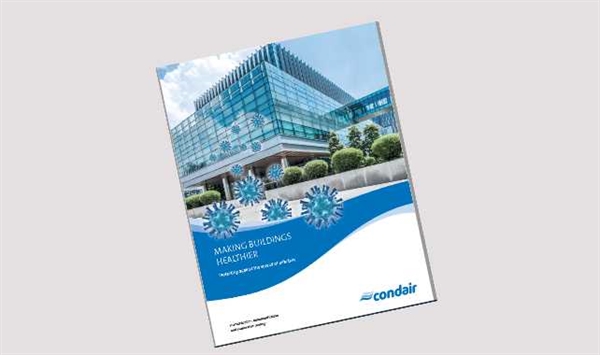02.06.2021
Assisted Living Facilities: Our Healthy Living Checklist
Assisted living environments such as long-term care homes require specialized services and focuses. They differ from standard retirement homes as the residents are usually more limited in terms of cognitive or physical ability, relying on hardworking nursing staff, dietary aides, and other professionals to maintain an optimal quality of life. However, that necessary level of quality can’t be achieved without proper humidity control and ensuring indoor air is healthy.
When wondering how can we prevent indoor air pollution in assisted living facility settings, our Making Buildings Healthier publication has plenty of solutions. Bearing them in mind, here are some ways operators can set off in the right direction. Note that other environments, such as hospitals and basic retirement home operations, can also benefit from these tips!
Cleaning and Sanitization for a Healthy Indoor Environment in Assisted Living Facilities
Above all else, airborne infection control and minimizing health risks are crucial in any long-term care setting. Senior residents and those with preexisting conditions are much more susceptible to complications stemming from various sources – even a simple eye irritation or minor infection has the potential of becoming something worse in environments with poor air quality. Therefore, ensuring a clean and hygienic facility is of utmost importance, and it also helps to keep staff healthy while reducing the number of sick days they may need to take.
Proper humidity control can save the day here. By regulating conditions so relative humidity hovers between 40 and 60 percent, aerosols containing infectious microbes have a harder time spreading across rooms and even into others, helping facility operators more efficiently protect residents with an effective airborne infection control strategy. Combined with proactive, regular cleanings – especially all touch points, in resident quarters, and in common spaces shared by occupants – it can be less of a strain to keep your resident and staff population safe and healthy.
Work with Your Layout
Assisted living facilities are, by design, intended to introduce a balance of privacy and interactivity for residents. Whether receiving visits from family members, heading out for a stroll in the courtyard garden or receiving critical treatment, they and the team members responsible for their safety need an indoor layout that puts health and wellness first. The trouble is, this isn’t always easy – some floor plans feature complicated ventilation work, humidity and air “dead zones” where cycling and RH regulation is inadequate, and other problems. This is more prevalent in assisted living facilities contained in buildings that used to serve a different purpose.
Regardless, working with your layout is important. Ensure airflow and cycling is optimal in all rooms so residents and employees alike get sufficient fresh air, as this helps to reduce the particulate count and keep pollutants under better control. You should also keep a close eye on air exchange units to ensure they are set to handle current and projected occupation capacities in various rooms. Lastly, get your complete HVAC system inspected at least once a year to avoid blockages, particulate build-up in ductwork and grating, and other complications.
Optimal Lighting and Temperature
Fluorescent lighting is something you’re better off avoiding for any facility, especially any sort of healthcare or assisted living environment. It absorbs air moisture like a sponge, drying out rooms and reducing your humidity control efficiency. This can create a window of opportunity for dust mites, dead skin, and other allergens to fester and accumulate, especially if there are plenty of materials such as thick carpeting that easily trap them. Fluorescent lighting is also bad for one’s eyes and mental stimulation because of the moisture-absorbing nature of the technology, making it harder for staff to focus on delivering an optimal level of care while making residents feel increasingly irritated and uncomfortable.
Switching to LED lighting is not only healthier and less intrusive, but also cost-effective. These bulbs, unlike incandescent and fluorescent ones, don’t generate nearly as much heat either, helping you regulate indoor temperatures in addition to relative humidity. This can reduce your reliance on heating and air conditioning systems in the winter and summer months, respectively, making for an even further economical option that keeps indoor spaces healthy.
Materials
Lastly, what kinds of materials are used in the construction, furnishing, and decoration of your assisted living facility? We’ve covered how carpeting can trap various particulates but there are other examples to consider. These include unnatural building materials that are incapable of encouraging healthy bacteria cultures as they cannot absorb sufficient nutrients or moisture. Alternatively, upholstered furniture, thick curtains, and some forms of bedding can harbor and accumulate dust, allergens, and other unwanted particles. Switching to other solutions such as hardwood flooring, low-pile carpeting, and cellular window shades can keep your facility looking beautiful but also serving a more practical purpose in terms of reducing buildup.
Wondering “how can we prevent indoor air pollution in assisted living facilities?” You’re not alone, and the good news is there are many ways to ensure a clean, comfortable, and welcoming setting for all. For more help with achieving a healthy indoor environment, or to learn more about our high-efficiency humidification and temperature control solutions, contact us at Condair today. We’re happy to assist in any way we can!
Helpful Links:



